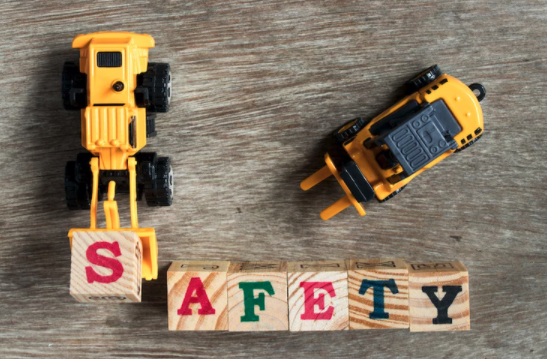Our focus is on protecting people who work alone, or out of sight or hearing of colleagues. From time to time in our blog, we like to take stock of the bigger picture of workplace safety in the UK. A great starting point is always the statistics on workplace injuries and ill-health from the Health and Safety Executive (HSE). HSE figures don’t distinguish whether injuries and illness affect lone workers or others. But by looking at the broader picture of UK workplace safety, we’ll provide some context for issues affecting lone worker protection.
The facts about workplace injuries and ill-health
Latest available HSE workplace injury figures are for 2018-19. In that year, 147 workers died at work (up from 144 in 2017-18), of which over a quarter were falls from a height. As for non-fatal injuries, there are two sources of information. The Reporting of Injuries, Diseases and Dangerous Occurrences Regulations 2013 (RIDDOR) is a self-reporting system which logged 69,208 injuries in 2018-19 (down from 71,062 injuries in 2017-18). But the broader measure is the Labour Force Survey, which showed 581,000 injuries during the year (up from 555,000 in 2017-18). Of non-fatal injuries, some 37% were slips, trips and falls (whether on the same level or falls from a height). Handling, lifting and carrying accounted for 20%, while acts of violence caused 8% of these injuries. Together, non-fatal workplace injuries caused the loss of an estimated 4.7 million working days across 2018-19.
The effects of ill health are even more striking. Figures show 1.4 million working people suffering from a work-related illness in 2018-19. Of these, just under half a million were new diagnoses. Stress, anxiety or depression accounted for 44% of the total, with musculoskeletal disorders accounting for a further 37%. As a result, an estimated 23.5 million working days were lost due to work-related ill-health during the year.
Workplace safety, sector by sector
To get a more accurate picture, it’s worth focusing on statistics across different economic sectors. Since some parts of the economy employ more than others, raw figures don’t provide the full picture. To reflect this fact and allow meaningful comparisons, the HSE measures rates of injury and ill-health per 100,000 workers.
On this measure, the agriculture, forestry and fishing sector has the highest rate of both injuries and ill-health. Other sectors with statistically higher rates of workplace injuries were manufacturing and construction, public administration and defence, retail, and accommodation and food services. As for work-related ill-health, it was the health and social care and education sectors which had higher rates of illness per 100,000 workers.
Failure to protect workers is a costly business
The UK’s robust health and safety legislation has reduced the number of accidents in recent years. Under new sentencing guidelines, fines imposed on UK companies for health and safety breaches were £54.5 million during the year. Fines are having an effect; enforcement authorities issued fewer notices of legislative breaches to employers in 2018-19. What’s more, the UK compares favourably with other European countries when it comes to workplace injuries and illness, especially when it comes to fatalities. (Eurostat figures show the rate in 2016 in the UK was 0.5 per 100,000 employees, against the EU-28 average of 1.25).
Yet despite the improvements, workplace accidents and newly diagnosed illness cost the UK economy dear. The HSE estimates the cost of in 2018-19 was £15.0 billion. This covers both ‘human’ costs (impacts on individuals’ quality of life, or loss of life), and ‘financial’ costs (loss of production and healthcare costs). Interestingly, it’s ill-health that accounts for two-thirds of this cost. Despite injuries accounting for a greater proportion of breaches, ill-health results in more time off work on average, which drives higher costs. And individuals bear the brunt of these costs; human costs account for around 60% of the total.
Lone worker protection requires a holistic approach
Within this context, it’s vital to look at lone worker protection in the round. Employers should take steps such as:
- regularly undertaking risk assessments, especially when job roles or personnel change,
- reviewing safety policies and ensuring that everyone adheres to them,
- taking proactive steps to ensure lone-working employees understand the importance of good personal care and mitigate risks of loneliness when working alone,
- communicating clearly with employees about practical steps you’re taking to protect them.
To this last point, deploying Protect as a lone worker safety system is a great way of providing help and support in a range of scenarios. Our barrier and broadcast functions can prevent lone workers putting themselves in harm’s way. We can mitigate the risks that lone workers face with our voice memo and proactive support features. And we can help lone workers who have suffered accidents get the help that they need, with our emergency and reactive (worker down) functions. With Safe Hub on your side, you can minimise the risks of physical injury and mental ill-health amongst your lone working employees. And you’ll be the best employer you can be.







